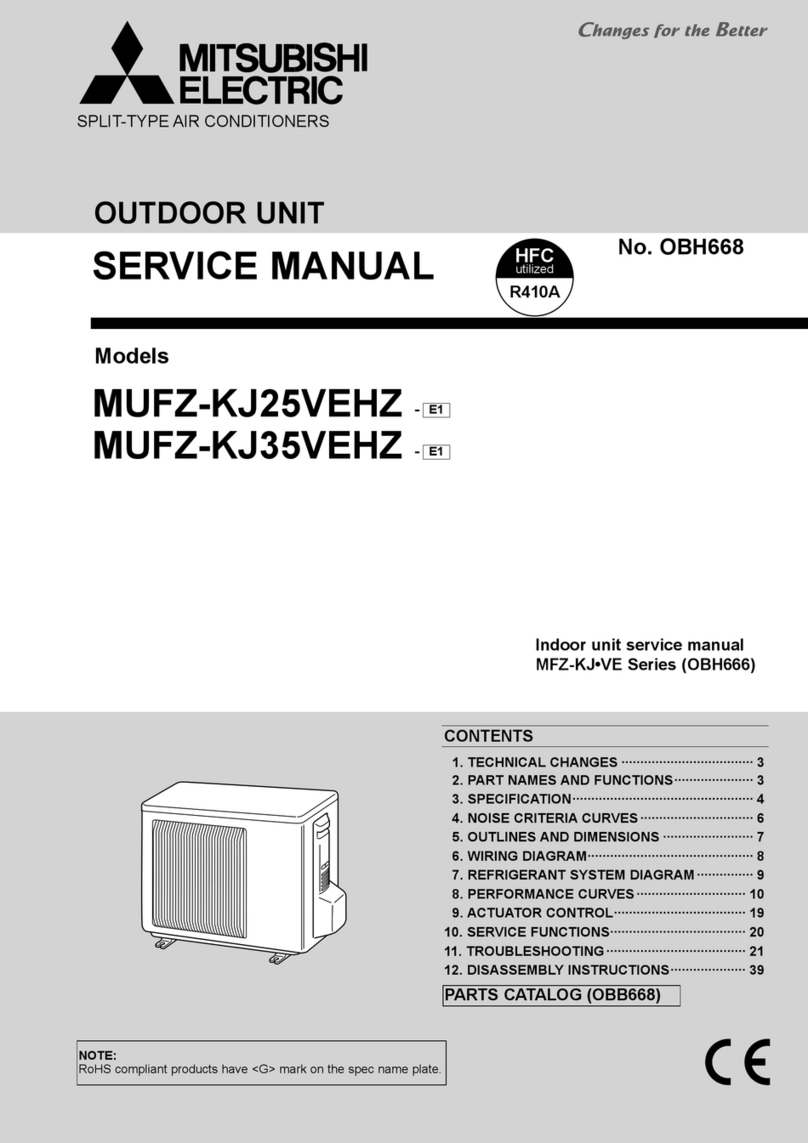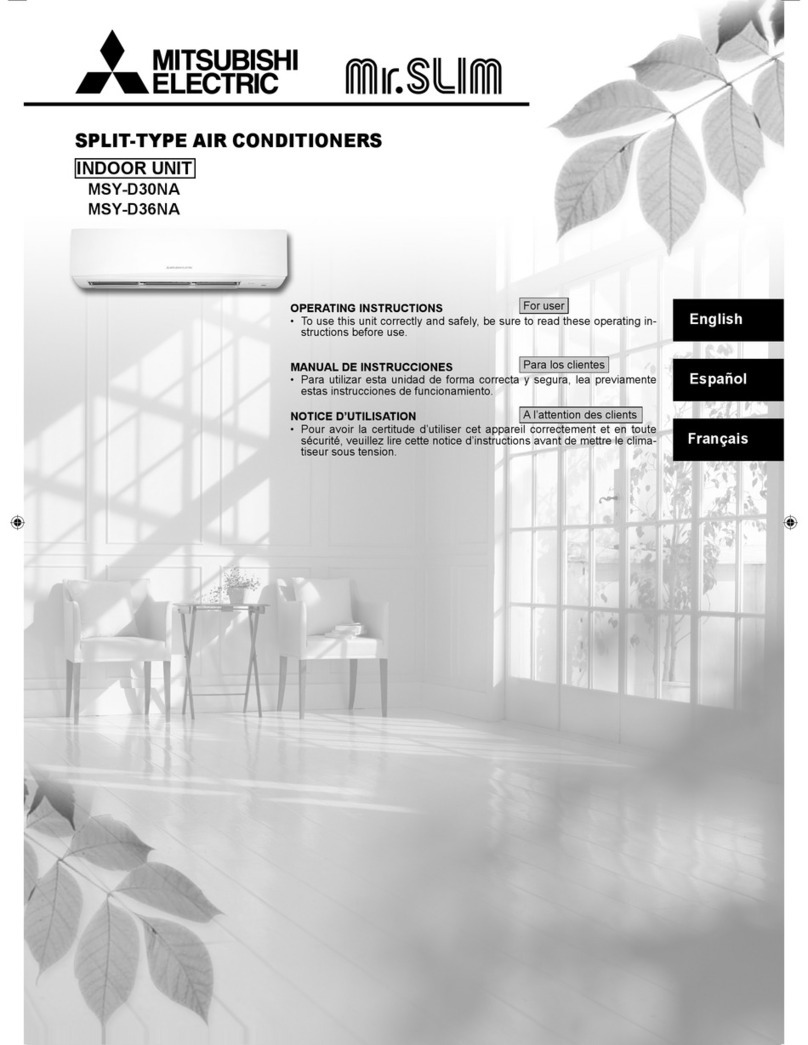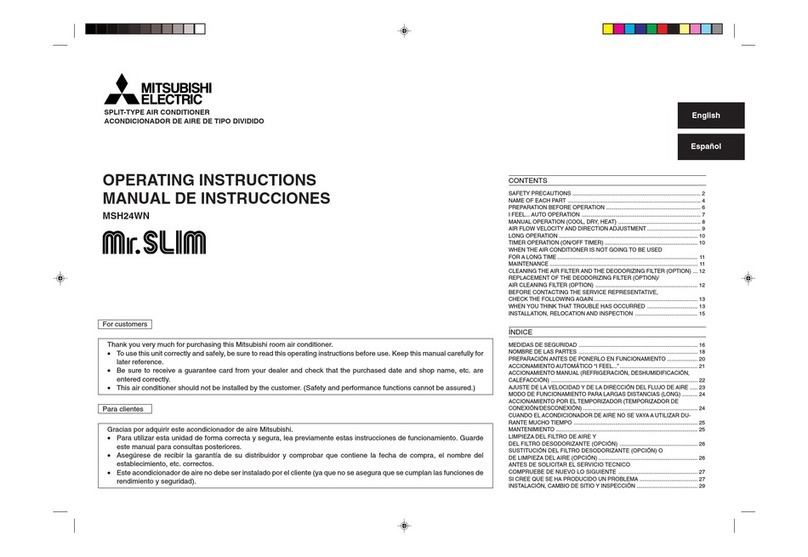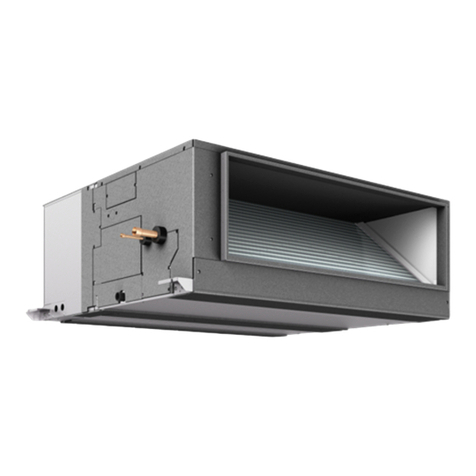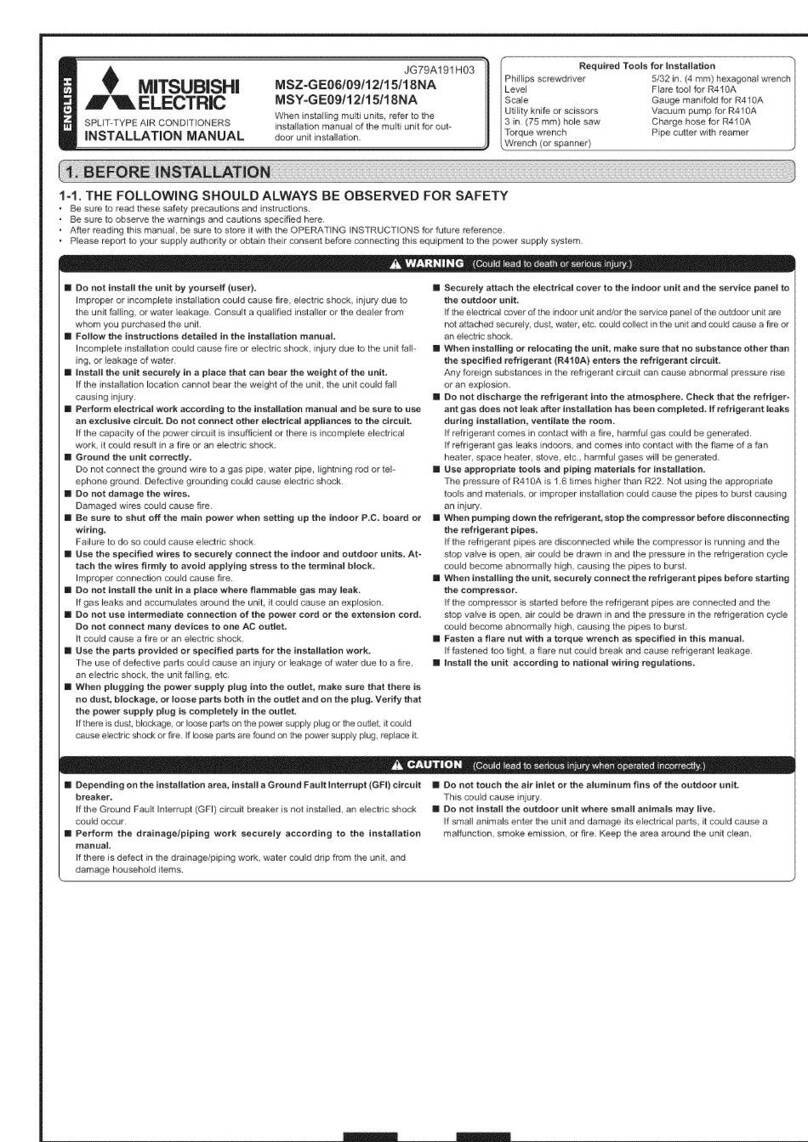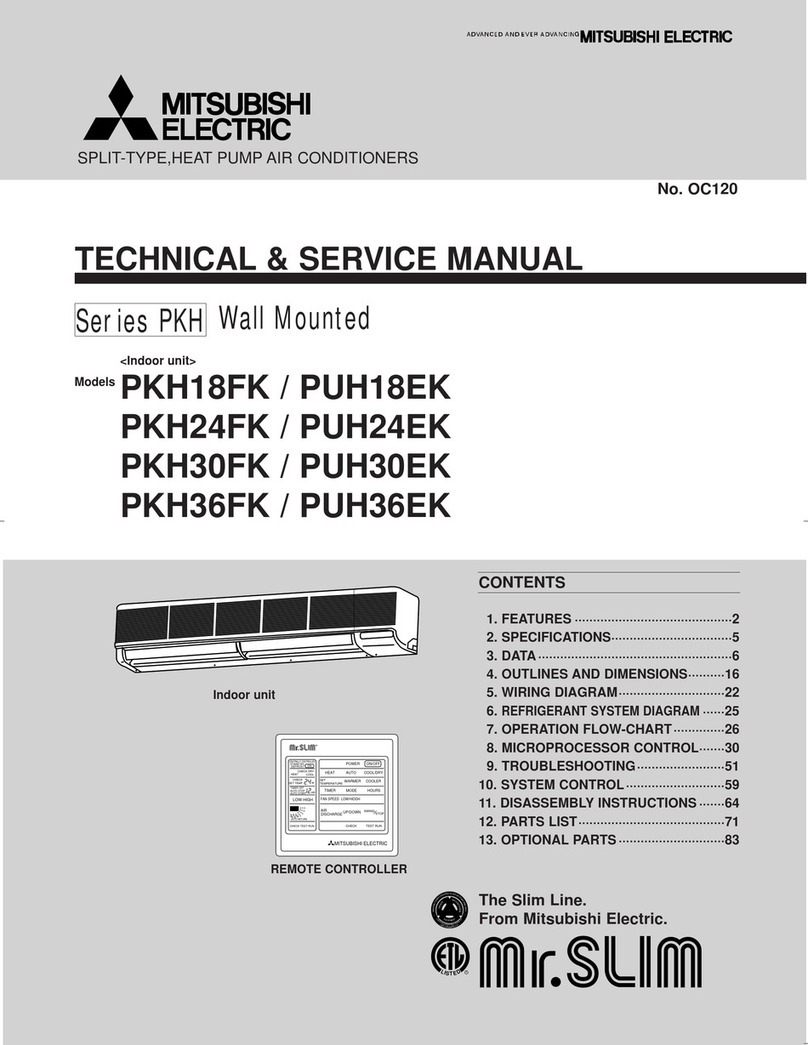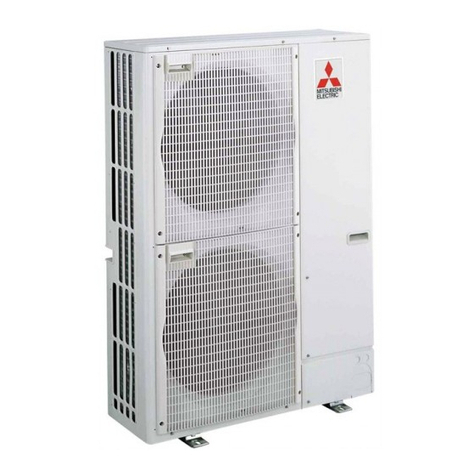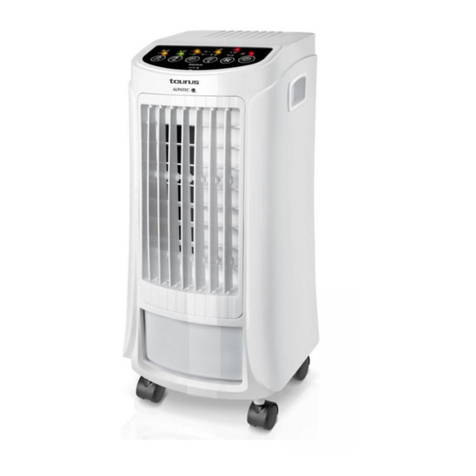
EN-1
FOR INSTALLER
ENGLISH
When installing multi units,
refer to the installation
manual of the multi unit for
outdoor unit installation.
CONTENTS
1. BEFORE INSTALLATION..................................1
2. INDOOR UNIT INSTALLATION .........................4
3. OUTDOOR UNIT INSTALLATION .....................5
4. PURGING PROCEDURES, LEAK TEST, AND
TEST RUN.........................................................6
5. RELOCATION AND MAINTENANCE ................7Appropriate personal protective equipment
The installer should ensure they check the respective Work Health
and Safety (WHS) Act within their jurisdiction as the requirements and
obligations may dier.
Required Tools for Installation
Phillips screwdriver
Level
Scale
Utility knife or scissors
65 mm hole saw
Torque wrench
Wrench (or spanner)
4 mm hexagonal wrench
Flare tool for R32, R410A
Gauge manifold for R32, R410A
Vacuum pump for R32, R410A
Charge hose for R32, R410A
Pipe cutter with reamer
1. BEFORE INSTALLATION
MEANINGS OF SYMBOLS DISPLAYED ON INDOOR UNIT AND/OR OUTDOOR UNIT
WARNING
(Risk of re)
This unit uses a ammable refrigerant.
If refrigerant leaks and comes in contact with re or heating part, it will create harmful gas and there is risk of re.
Read the OPERATING INSTRUCTIONS carefully before operation.
Service personnel are required to carefully read the OPERATING INSTRUCTIONS and INSTALLATION MANUAL before operation.
Further information is available in the OPERATING INSTRUCTIONS, INSTALLATION MANUAL, and the like.
1-1. THE FOLLOWING SHOULD ALWAYS BE OBSERVED FOR SAFETY
• Be sure to read “THE FOLLOWING SHOULD ALWAYS BE OBSERVED FOR SAFETY” before installing the air conditioner.
• Be sure to observe the warnings and cautions specied here as they include important items related to safety.
• After reading this manual, be sure to keep it together with the OPERATING INSTRUCTIONS for future reference.
• When using this product in Australia, carefully read the Australian Institute of Refrigeration and Flammable refrigerants Safety Guide in Air conditioning and Heating (AIRAH) as well.
WARNING (Could lead to death, serious injury, etc.)
nDo not install the unit by yourself (user).
Incomplete installation could cause re, electric
shock, injury due to the unit falling, or leakage of
water.Consultthe dealer fromwhomyoupurchased
the unit or a qualied installer.
nPerform the installation securely referring to the
installation manual.
Incomplete installation could cause re, electric
shock, injury due to the unit falling, or leakage of
water.
nWhen installing the unit, use appropriate protec-
tive equipment and tools for safety.
Failure to do so could cause injury.
nInstall the unit securely in a place which can
bear the weight of the unit.
If the installation location cannot bear the weight of
the unit, the unit could fall causing injury.
nDo not alter the unit.
It may cause re, electric shock, injury or water
leakage.
n Electrical work should be performed by a quali-
ed, experienced electrician, according to the
installation manual. Be sure to use an exclusive
circuit. Do not connect other electrical appli-
ances to the circuit.
If the capacity of the power circuit is insucient or
there is incomplete electrical work, it could result in
a re or an electric shock.
nEarth the unit correctly.
Do not connect the earth to a gas pipe, water pipe,
lightningrod,ortelephoneearth.Defective earthing
could cause electric shock.
n Do not damage the wires by applying excessive
pressure with parts or screws.
Damaged wires could cause re or electric shock.
n Be sure to cut o the main power in case of set-
ting up the indoor P.C. board or wiring works.
Failure to do so could cause electric shock.
n Use the specied wires to connect the indoor
and outdoor units securely and attach the wires
rmly to the terminal block connecting sections
so the stress of the wires is not applied to the
sections. Do not extend the wires, or use inter-
mediate connection.
Incomplete connecting and securing could cause
re.
n Do not install the unit in a place where ammable
gas may leak.
Ifgasleaksandaccumulates in the area aroundthe
unit, it could cause an explosion.
nDo not useintermediate connection of the power
cord or the extension cord and do not connect
many devices to one AC outlet.
It could cause a re or an electric shock due to
defective contact, defective insulation, exceeding
the permissible current, etc.
n Be sure to use the parts provided or specied
parts for the installation work.
The use of defective parts could cause an injury or
leakage of water due to a re, an electric shock, the
unit falling, etc.
n When plugging the power supply plug into the
outlet, make sure that there is no dust, clogging,
or loose parts in both the outlet and the plug.
Make sure that the power supply plug is pushed
completely into the outlet.
Ifthereisdust, clogging, or loosepartsonthe power
supply plug or the outlet, it could cause electric
shock or re. If loose parts are found on the power
supply plug, replace it.
n Attach the electrical cover to the indoor unit and
the service panel to the outdoor unit securely.
If the electrical cover of the indoor unit and/or the
service panel of the outdoor unit are not attached
securely, it could result in a re or an electric shock
due to dust, water, etc.
n When installing, relocating, or servicing theunit,
make sure that no substance other than the
specied refrigerant (R32) enters the refrigerant
circuit.
Any presence of foreign substance such as air
can cause abnormal pressure rise and may result
in explosion or injury. The use of any refrigerant
other than that specied for the system will cause
mechanical failure, system malfunction, or unit
breakdown. In the worst case, this could lead to a
serious impediment to securing product safety.
n Do not discharge the refrigerant into the atmos-
phere. If refrigerant leaks during installation,
ventilate the room. Check that the refrigerant
does not leak after installation has been com-
pleted.
If refrigerant leaks and comes in contact with re or
heating part of such a fan heater, kerosene heater,
or cooking stove, it will create harmful gas.
n Use appropriate tools and piping materials for
installation.
Thepressureof R32 is1.6times more thanR22.Not
usingappropriatetoolsormaterialsandincomplete
installation could cause the pipes to burst or injury.
n When pumping down the refrigerant, stop the
compressor before disconnecting the refriger-
ant pipes.
If the refrigerant pipes are disconnected while the
compressor is running and the stop valve is open,
air could be drawn in and the pressure in the refrig-
eration cycle could become abnormally high. This
could cause the pipes to burst or injury.
n When installing the unit, securely connect the
refrigerant pipes before starting the compres-
sor.
If the compressor is started before the refrigerant
pipes are connected and when the stop valve is
open, air could be drawn in and the pressure in the
refrigeration cycle could become abnormally high.
This could cause the pipes to burst or injury.
n Fasten a are nut with a torque wrench as speci-
ed in this manual.
If fastened too tight, a are nut may break after a
long period and cause refrigerant leakage.
n The unit shall be installed in accordance with
national wiring regulations.
n When using a gas burner or other ame-pro-
ducing equipment, completely remove all of the
refrigerant from the air conditioner and ensure
that the area is well-ventilated.
If the refrigerant leaks and comes in contact in re
or heating part, it will create harmful gas and there
is risk of re.
n Do not use means to accelerate the defrosting
process or to clean, other than those recom-
mended by the manufacturer.
n The appliance shall be stored in a room without
continuously operating ignition sources (for
example: open ames, an operating gas appli-
ance or an operating electric heater).
n Do not pierce or burn.
n Be aware that refrigerants may not contain an
odour.
n Pipe-work shall be protectedfromphysical dam-
age.
n The installation of pipe-work shall be kept to a
minimum.
n Compliance with national gas regulations shall
be observed.
n Keep any required ventilation openings clear of
obstruction.
n In Australia, only technicians that possess the
appropriate license issued by the Australian
Refrigeration Council (ARC) should install this
product.
VG79J830H01.indd 1 2020/03/09 10:50:41






